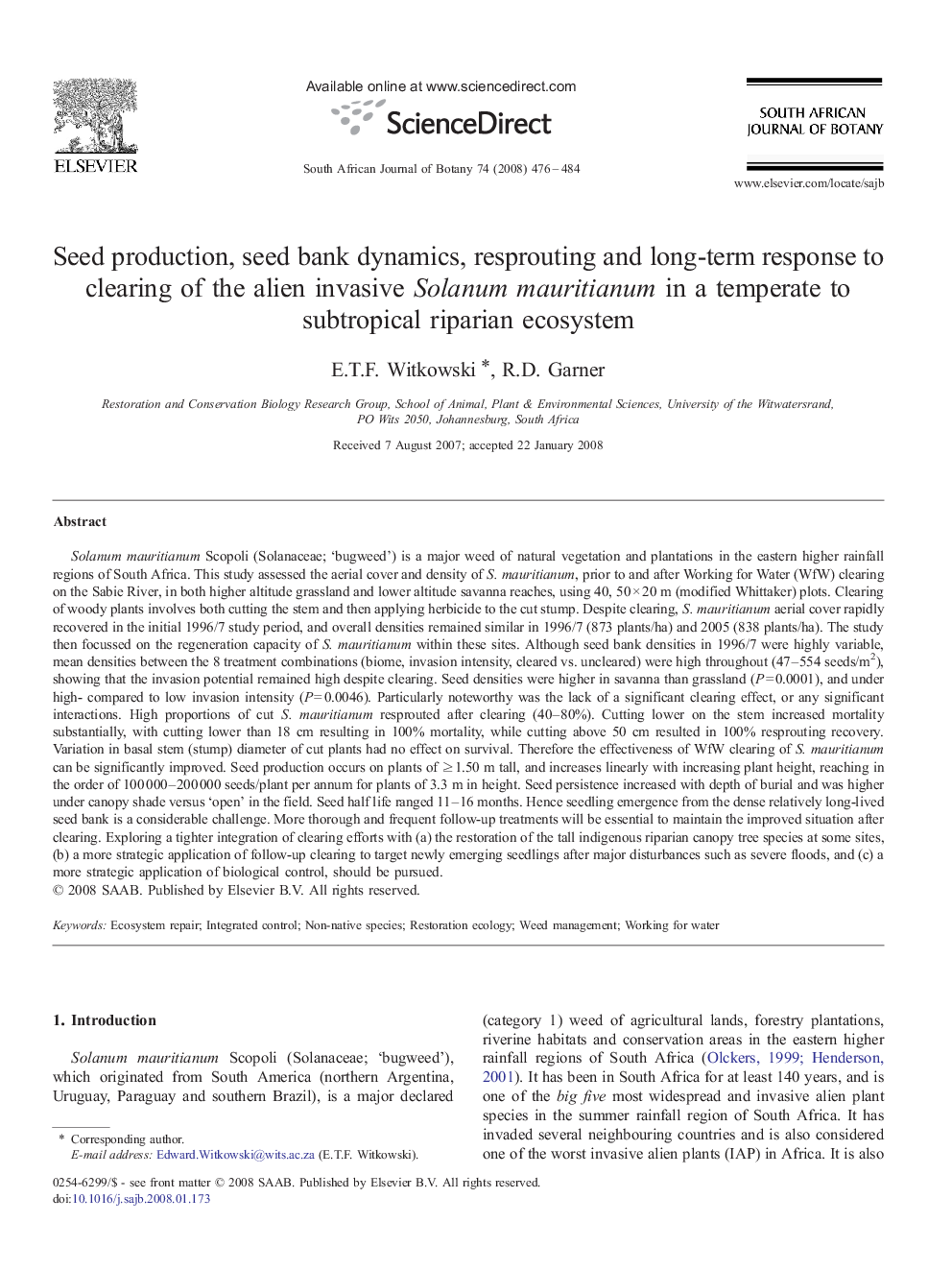| کد مقاله | کد نشریه | سال انتشار | مقاله انگلیسی | نسخه تمام متن |
|---|---|---|---|---|
| 4521492 | 1625194 | 2008 | 9 صفحه PDF | دانلود رایگان |

Solanum mauritianum Scopoli (Solanaceae; ‘bugweed’) is a major weed of natural vegetation and plantations in the eastern higher rainfall regions of South Africa. This study assessed the aerial cover and density of S. mauritianum, prior to and after Working for Water (WfW) clearing on the Sabie River, in both higher altitude grassland and lower altitude savanna reaches, using 40, 50 × 20 m (modified Whittaker) plots. Clearing of woody plants involves both cutting the stem and then applying herbicide to the cut stump. Despite clearing, S. mauritianum aerial cover rapidly recovered in the initial 1996/7 study period, and overall densities remained similar in 1996/7 (873 plants/ha) and 2005 (838 plants/ha). The study then focussed on the regeneration capacity of S. mauritianum within these sites. Although seed bank densities in 1996/7 were highly variable, mean densities between the 8 treatment combinations (biome, invasion intensity, cleared vs. uncleared) were high throughout (47–554 seeds/m2), showing that the invasion potential remained high despite clearing. Seed densities were higher in savanna than grassland (P = 0.0001), and under high- compared to low invasion intensity (P = 0.0046). Particularly noteworthy was the lack of a significant clearing effect, or any significant interactions. High proportions of cut S. mauritianum resprouted after clearing (40–80%). Cutting lower on the stem increased mortality substantially, with cutting lower than 18 cm resulting in 100% mortality, while cutting above 50 cm resulted in 100% resprouting recovery. Variation in basal stem (stump) diameter of cut plants had no effect on survival. Therefore the effectiveness of WfW clearing of S. mauritianum can be significantly improved. Seed production occurs on plants of ≥ 1.50 m tall, and increases linearly with increasing plant height, reaching in the order of 100 000–200 000 seeds/plant per annum for plants of 3.3 m in height. Seed persistence increased with depth of burial and was higher under canopy shade versus ‘open’ in the field. Seed half life ranged 11–16 months. Hence seedling emergence from the dense relatively long-lived seed bank is a considerable challenge. More thorough and frequent follow-up treatments will be essential to maintain the improved situation after clearing. Exploring a tighter integration of clearing efforts with (a) the restoration of the tall indigenous riparian canopy tree species at some sites, (b) a more strategic application of follow-up clearing to target newly emerging seedlings after major disturbances such as severe floods, and (c) a more strategic application of biological control, should be pursued.
Journal: South African Journal of Botany - Volume 74, Issue 3, July 2008, Pages 476–484